Disclosure: Meeple Mountain received a free copy of this product in exchange for an honest, unbiased review. This review is not intended to be an endorsement.
As part of an upcoming entry in our Publisher Profile series, I am playing games in the Red Raven Games catalog. I recently received a review copy of the first game in Red Raven’s “Arzium” series of adventure titles, 2015’s Above and Below. (Near and Far came next, then Now or Never arrived in 2022.)
Now that I’ve played Megaland, Eight-Minute Empire, and Knight Fall, one thing is clear: Red Raven drives the narrative elements and the world building in their games as well as any publisher in the business. I haven’t played Sleeping Gods, but that game rocketed up the BGG Top 100 list at an incredible pace. My colleague Jesse Fletcher loved the game and many of my friends believe Sleeping Gods is the best game Red Raven has ever produced.
Knowing all of this, I was excited to get Above and Below to the table. It’s a dinosaur in game years—eight years old!! It’s tough to get some of my friends to play games that were released even a year ago, so an eight-year-old game took some selling. But I coerced enough people to the table over the last few weeks to get some plays in, and I cobbled together some thoughts on the game below.
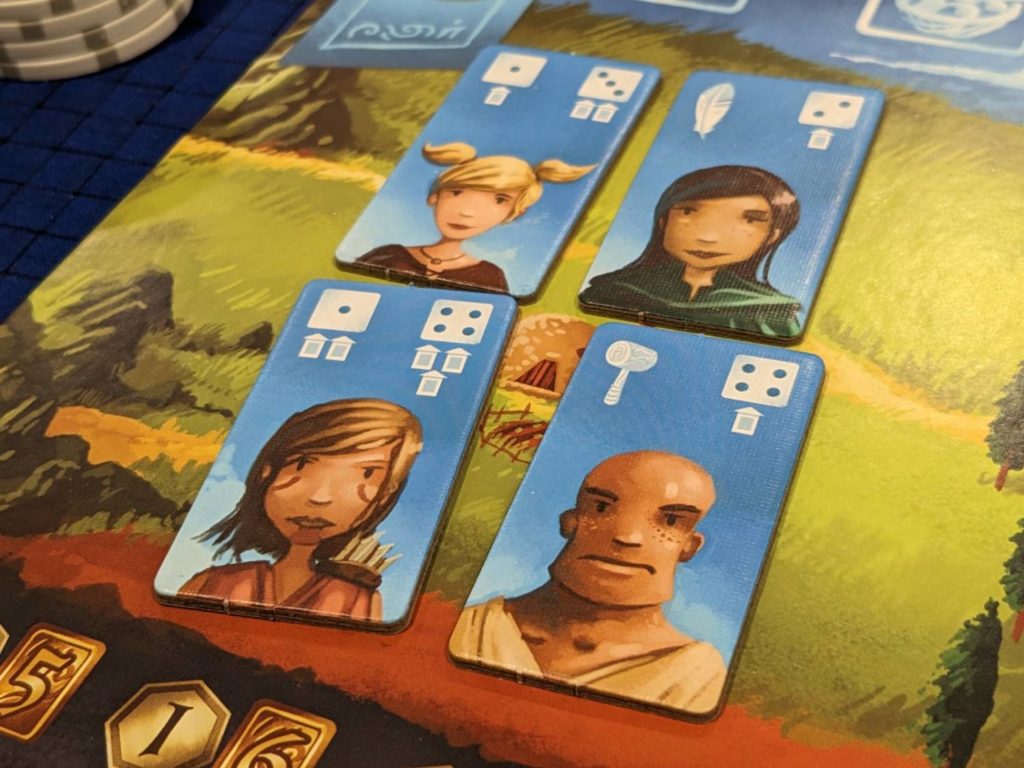
Villagers, Exhausted
At its core, Above and Below is a narrative-driven tableau builder. Players take on the role of small tribes looking to rebuild their community after barbarians ravaged the countryside. With a starting band of three villagers, players will take actions to build new buildings, train new villagers, and harvest crops above and below ground.
Below ground, you ask? Yep, the new village is built over a series of underground tunnels that require exploration. Even a shallow tunnel dive reveals promise—treasure, goods, and other surprises await. On a turn, players have to exhaust one or more of their villagers to take actions, and when seven rounds have been played, scores are tallied to determine which tribe is the greatest of them all.
The actions are fairly simple: build buildings or outposts, take the Labor action to grab a coin or two, explore the tunnels, recruit new villagers using the Train action. Most turns are lightning-quick. When a player wants to explore, a different player reads from the Scenario Book; this book offers the majority of the game’s magic. The active player rolls a die that leads to a specific scenario being read.
All of the scenarios are short reads, so this isn’t Clank! Acquisitions Inc. territory, where you have to read three minutes of flavor text 20 times a game. The writing in Above and Below is excellent, and it’s even better because it is so brief. At the end of a short blurb, the active player is offered a choice, and then dice determine a success or a failure.
Like other Red Raven productions, the writing of Above and Below is its strength, but the overall production is why you want to sit down at the table with a copy of the game. The artwork shines, the characters look like they have real personality, the player boards are excellent, and the card art and iconography are easy on the eyes.
In fact, the production here is so strong that it leads to some of my disappointment with the gameplay. I wish everything about Above and Below was as good as the Scenario Book or the artwork, but the cracks show almost right away.
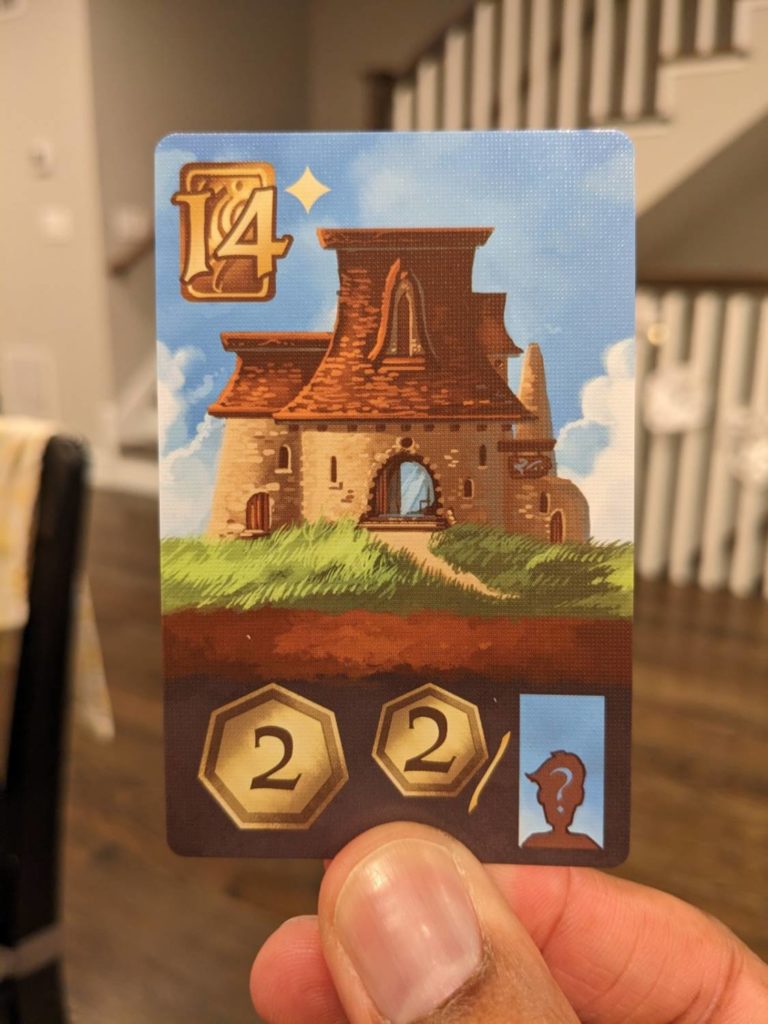
MoneyIsTight
It’s even tighter than the spacing in that header.
“I just don’t like games that stress me out about money.” This was my wife’s comment during a two-player game of Above and Below, and I agree 100%. On my scale of one to Pipeline (the game I always say is the stingiest game about money I’ve ever played), income in Above and Below is probably an eight, especially in the first half of each game.
One of my measures with games that feature money is how end-round income works. You begin a game of Above and Below with seven coins, more if you are not the first player. But your starting income is only four coins. That means in round two, probably round three, you are going to have less money than you begin play with, especially if you do something silly like, I don’t know, buy any buildings or train any additional villagers.
Above and Below makes getting additional cash extremely difficult. You can take the Labor action to take one coin for each villager you exhaust on a turn, but that won’t pay the bills AND it uses up valuable resources used to take the game’s other actions. You could try to sell some of the goods you harvest to another player (this will net a minimum of three coins), but what if none of the other players bite?
The best way to boost income: harvest goods then seed them in the advancement track. This track is used both to provide end-game scoring and to boost income based on unique goods placed on the track during play. There are eight different goods, so that means eight different ways to increase income. In my plays, it was common for players to get 3-5 goods on that advancement track, and maybe more if goods become a focus. But placing goods in this way costs quite a bit of cash too.

The game’s best buildings are the six “star” buildings, essentially milestone points that can be bought and built late in the game. These range in cost from 11-18 coins, but provide a big scoring boost essential to winning the game. To buy them, you are probably going to skip spending any money for a round or two, meaning that those rounds will be spent harvesting or exploring to save up.
“Justin, can’t you just go exploring to find a pile of cash in the tunnels?”
That’s what I would have thought, too.
So, you can imagine my surprise the first time I sent three villagers down for an exploration mission, and I came away with…one coin. On another mission, I sent two villagers down and came out with a single fish (one of the game’s goods).
I was starting to get that bad Gloomhaven treasure feeling. When I go on a dungeon dive, I want chain mail. I want a thousand gold pieces. I want a magic sword, or a flying chariot, or a freakin’ spaceship. I want TREASURE, not six scraps of dirt.
In Above and Below, you are often going to come out with a coin, maybe two, even on successful trips. That just isn’t fun to me, and that’s more disappointing when the scenario is so well written!!
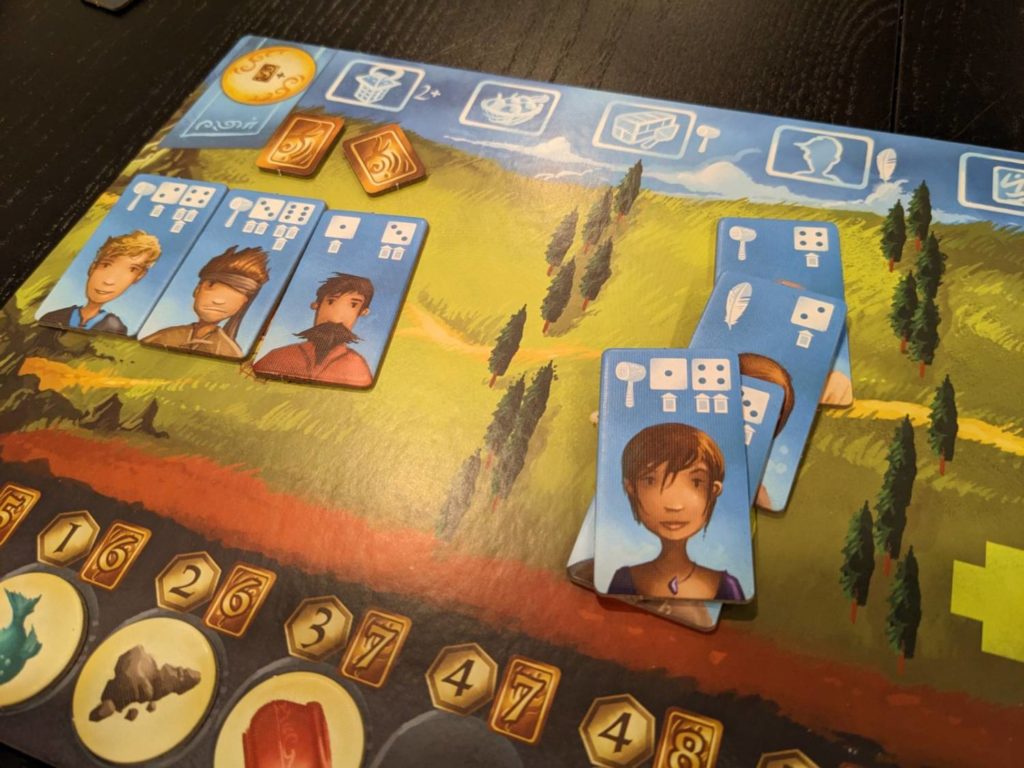
Life’s a Journey
I polled a number of friends before writing this piece, particularly my solid network of Ryan Laukat fanboys and fangirls who adore the designer’s other work. It sounds like my thoughts on Above and Below align with theirs; the next two games in the Arzium series are better, and in many ways Sleeping Gods seems like Laukat’s magnum opus.
There’s a decent game here, one that has aged well despite thousands of titles coming after it that take advantage of some of this game’s innovations marrying narrative, theme, and a tidy experience. But Above and Below never shined for me. The moment-to-moment turn taking and planning for future actions didn’t get the juices flowing. I was always buying the cheapest talent on the villager market, or the buildings that produce a good I don’t already have if I could afford it.
The card draw in Above and Below also left a lot to be desired. While there is an option to spend a coin to wipe a market row to see four new cards, money is so tight that burning even a single coin might leave you short when you want to buy one of the new cards. And you will sometimes find that after spending all of your money on a new outpost, another one hits that is even better, and even cheaper, than the one you just bought. That’s board games, not an Above and Below problem, but it’s still an issue worth calling out.
The stories are excellent, but the gameplay is so-so. I’m glad I gave Above and Below a spin, but now I want to rush out and play Near and Far stat so that I can see what mechanisms improve in the next iteration of the Arzium universe.


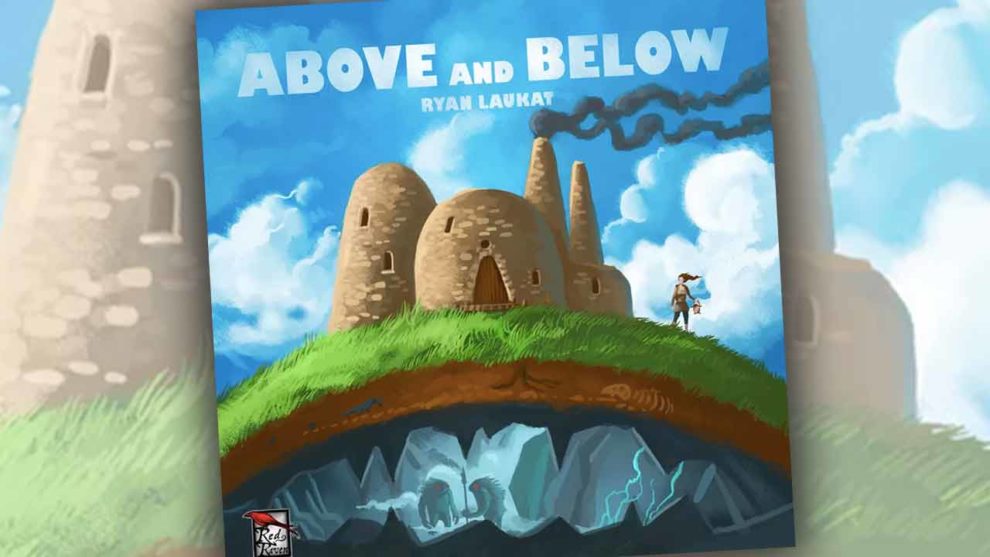

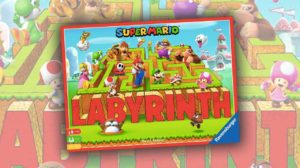







Add Comment